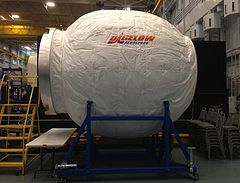MilitantSecular
Warlord
- Joined
- Jan 25, 2016
- Messages
- 171
the canceled NASA mission
and the European replacement
http://lisa.nasa.gov/
http://www.e-mta.eu/researchers-fro...t-spatial-observatory-of-gravitational-waves/
http://nasa3d.arc.nasa.gov/detail/lisa
http://www.outerspacecentral.com/relativity_page.html
http://www.popsci.com/science/artic...-cost-nasa-bows-out-two-astrophysics-missions
https://dorigo.wordpress.com/2007/07/29/guest-post-daniele-bortoluzzi-lisa-and-its-challenges/
http://science.nasa.gov/missions/st-7/
https://directory.eoportal.org/web/eoportal/satellite-missions/l/lisa-pathfinder
http://stuver.blogspot.com/2011/04/nasa-cancels-lisa-and-more-info-on-big.html
http://spaceflight101.com/lisa-pathfinder/
http://www.popularmechanics.com/space/news/a18366/lisa-pathfinder-launch/
thought it might make an interesting read for you guys
with all the headlines about Gravity Waves
Pathfinder for the next generation spacecraft, called eLISA.
In space no one can you hear you scream. Neither do you have to deal with pesky Earth-based phenomena like seismic tremors. Researchers have been lobbying the European Space Agency to put a LIGO-like detector in space — the Evolved Laser Interferometer Space Antenna — sometime in the 2030s. In anticipation of eLISA, ESA recently launched the LISA Pathfinder, a mission to test technologies needed for the full-fledged space-based gravitational wave detector.
https://www.elisascience.org/
ELISA the replacement for NASA's cancelled LISA mission
and the European replacement
http://lisa.nasa.gov/
http://www.e-mta.eu/researchers-fro...t-spatial-observatory-of-gravitational-waves/
http://nasa3d.arc.nasa.gov/detail/lisa
http://www.outerspacecentral.com/relativity_page.html
http://www.popsci.com/science/artic...-cost-nasa-bows-out-two-astrophysics-missions
https://dorigo.wordpress.com/2007/07/29/guest-post-daniele-bortoluzzi-lisa-and-its-challenges/
http://science.nasa.gov/missions/st-7/
https://directory.eoportal.org/web/eoportal/satellite-missions/l/lisa-pathfinder
http://stuver.blogspot.com/2011/04/nasa-cancels-lisa-and-more-info-on-big.html
http://spaceflight101.com/lisa-pathfinder/
http://www.popularmechanics.com/space/news/a18366/lisa-pathfinder-launch/
thought it might make an interesting read for you guys
with all the headlines about Gravity Waves
Pathfinder for the next generation spacecraft, called eLISA.
In space no one can you hear you scream. Neither do you have to deal with pesky Earth-based phenomena like seismic tremors. Researchers have been lobbying the European Space Agency to put a LIGO-like detector in space — the Evolved Laser Interferometer Space Antenna — sometime in the 2030s. In anticipation of eLISA, ESA recently launched the LISA Pathfinder, a mission to test technologies needed for the full-fledged space-based gravitational wave detector.
https://www.elisascience.org/
ELISA the replacement for NASA's cancelled LISA mission


 . I don't doubt that the math works out, but none of the physics behind it is validated experimentally.
. I don't doubt that the math works out, but none of the physics behind it is validated experimentally.




